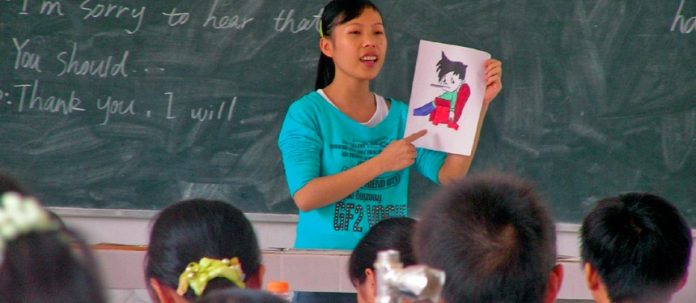The Native speaker debate drones on. Some argue for Native English Speaker Teachers, known as NESTs, others are in favour of Non-Native English Speaker Teachers, dubbed NNESTs. But one study in China has found that students made most progress when the two types of teachers collaborate to co-teach a class.
This research compared classes led by either an NNEST or NEST working with a teaching assistant, with classes co-taught equally by the two teachers. They wanted to investigate whether one kind of teacher would have a greater impact than the other – and whether the co-teaching combination would be better or worse than a single teacher.
The researchers recruited four, first-year Chinese university English classes of 30 students, with no significant differences in their language proficiency scores.
Two of the classes were then allocated to co-teaching. As for the other two classes, one was led by an NNEST teacher, the other by a NEST, with the second teacher acting as a teaching assistant in each case.
After 32 weeks, the two cotaught classes improved significantly. The other two classes barely made any progress, and there was no significant difference in outcomes between the class led by the NNEST and the one led by the NEST.
Within the design of this study, the authors addressed two of the major obstacles to co-teaching: both teachers received training in co-teaching methods, and they were given two hours per week to plan their co-taught lessons together. This is probably why the results of this small study are so positive, compared to the mixed results of previous studies; training and preparation time are luxuries many teachers can only dream of.
Co-teaching is not a trivial skill, and there are several methods to consider. In this study, the teachers practised team teaching (where they take turns presenting to the class) and station teaching (where teachers lead different tasks in different locations). The two coteaching classes were merged – so that teaching hours for each teacher were not increased.
Planning time addressed another major obstacle to team-teaching: their roles were clearly defined. Like many of us, I have been in ‘teams’ with co-teachers I never met and have been unsure who was supposed to be doing what.
Student interviews showed very positive feedback on the coteaching experience. Students reported that teachers were able to address and compare both English and Chinese cultural issues. They also appreciated the complementary teaching styles: NESTs were more focussed on communication and fluency while NNEST’s tended to be sticklers for detail and accuracy.
REFERENCE
- Rao, Z. and Yu, H. (2019) ‘Enhancing students’ English proficiency by co-teaching between native and non-native teachers in an EFL context’, Language Teaching Research. https://doi.org/10.1177/1362168819873937





